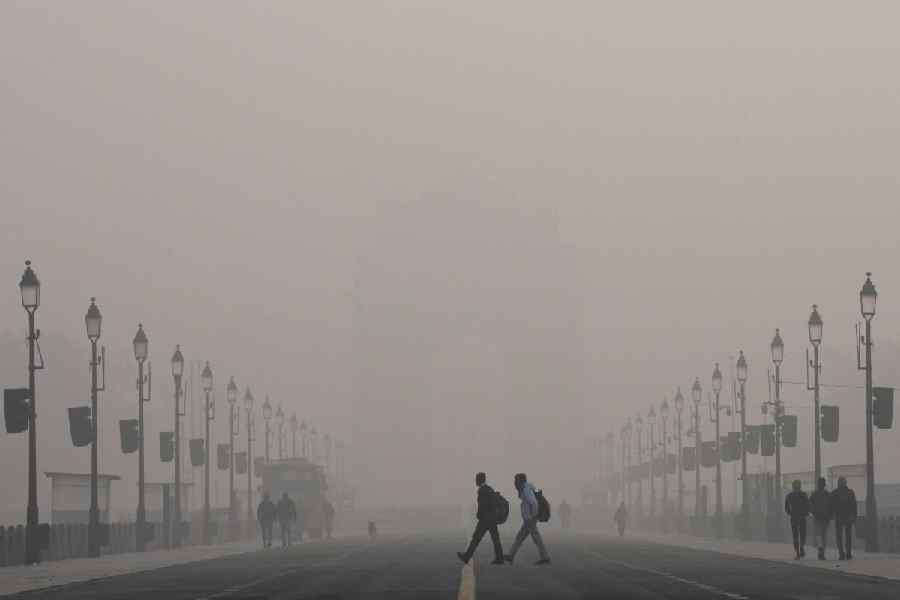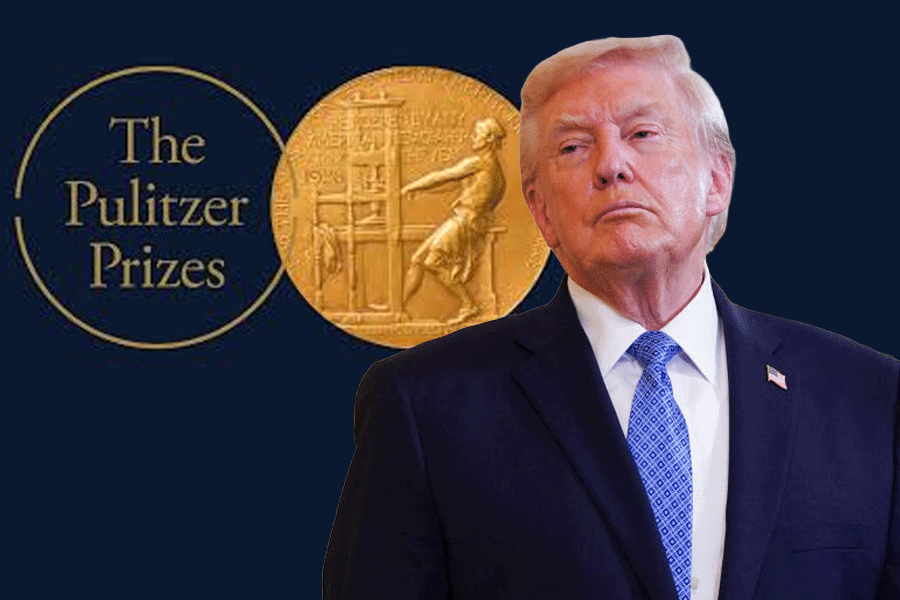The Lansdowne house of Sisir Kumar Bose, the paediatrician immortal in India’s history for driving his uncle Netaji Subhas Chandra Bose out of British captivity on a January night, will soon be declared a heritage building.
The mayoral council of the Kolkata Municipal Corporation (KMC) decided last week to give the Grade IIB heritage tag to the two-storey house at 90 Sarat Bose Road, built in the 1950s.
A Blue Plaque will be installed at the entry to the house to announce its heritage status. The plaque will read: “Residence of Sisir Kumar Bose and Krishna Bose”.
Krishna Bose, wife of Sisir, was a former parliamentarian, author and professor.
According to the KMC’s rules, in a Grade IIB structure, “horizontal and vertical addition and alteration of the building may be allowed in compatibility with the heritage building”.
Sisir Kumar Bose’s book Mahanishkraman (The Great Escape), which narrates the tale of Netaji’s escape from the family’s Elgin Road home on the intervening night of January 16 and 17, 1941, in a Wanderer car, was written at 90 Sarat Bose Road. Sisir drove Netaji up to Gomoh, then in Bihar.
In the book’s preface, Sisir Kumar Bose signed off with the name of the house, Basundhara, and its address.
Harvard professor Sugata Bose, son of Sisir and Krishna Bose, told Metro the house has hosted many important members of the Azad Hind movement.
“My parents organised conferences on Netaji at Netaji Bhavan but the social gatherings were always held at this house. So many important personalities of the Azad Hind movement have come to this house,” he said.
A member of the KMC’s heritage conservation committee said: “Sugata Bose approached us for the heritage tag. The committee thought it fit to grant the building a Grade IIB status.”
Among the comrades of Subhas from the Azad Hind Fauj who visited the house were Lakshmi Sahgal and Gurbaksh Singh Dhillon, Janaki Thevar and Prem Kumar Sahgal, the KMC noted in its documents justifying the heritage tag.
This is where Abid Hasan, the man who coined the slogan Jai Hind and spent 93 days in the submarine with Subhas during their journey from Germany to Southeast Asia, narrated stories of his days with the commander, the basis of the book Sainiker Smriti by Krishna Bose.
“I remember doing a detailed interview of Abid Hasan when he came to this house in March 1976. We recorded this interview. Hasan told us he did not know where he was going till he met Netaji on a train from Berlin to Kiel a day before the journey,” said Sugata.
Netaji and Hasan set off from Kiel on February 9, 1943, and arrived in Sumatra in early May.
Sugata and his brother Sumantra Bose, a professor at the London School of Economics, stay in this house when in Calcutta.
The mayoral council’s proposal to grant the heritage tag to the house will be tabled at the civic body’s monthly meeting of councillors. After the councillors approve the proposal, the blue plaque will be installed.
The other two houses of the Bose family in Calcutta are Netaji Bhavan at 38/2 Elgin Road, which is a Grade I heritage building, and 1 Woodburn Park (Bibhabati Bose Sarani), a Grade IIA heritage building. The second house, built by Sarat Bose, Sisir Kumar Bose’s father and Netaji’s elder brother, was acquired by the government and houses the Netaji Institute of Asian Studies.
Paediatrician Apurba Ghosh, a student of Sisir Kumar Bose, said on Wednesday he met his teacher innumerable times at the Sarat Bose Road building.
“Sir ran a clinic from this house. I went there so many times to seek his advice or to discuss something. He was a long-time director of the Institute of Child Health and Krishna Bose was among the institute’s founder members,” said Ghosh.











